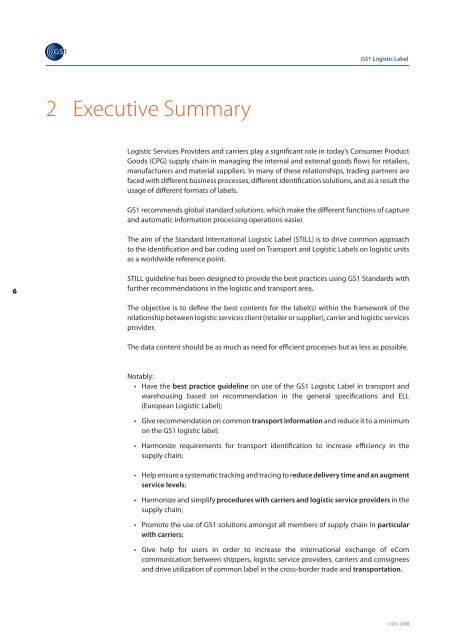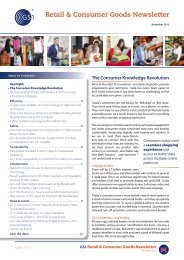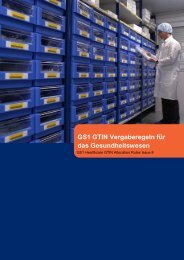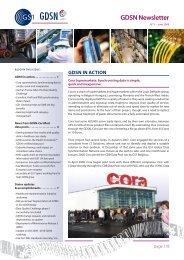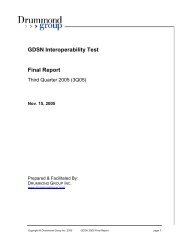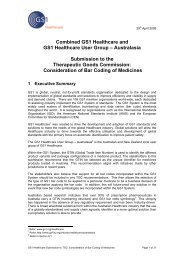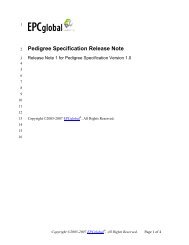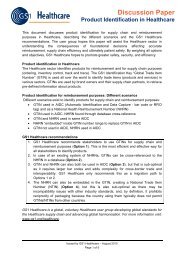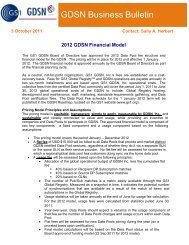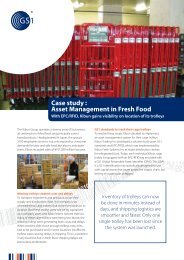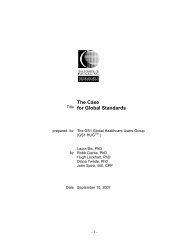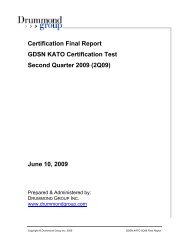Standard International Logistic Label - STILL - GS1
Standard International Logistic Label - STILL - GS1
Standard International Logistic Label - STILL - GS1
Create successful ePaper yourself
Turn your PDF publications into a flip-book with our unique Google optimized e-Paper software.
<strong>GS1</strong> <strong>Logistic</strong> <strong>Label</strong><br />
2 Executive Summary<br />
<strong>Logistic</strong> Services Providers and carriers play a significant role in today’s Consumer Product<br />
Goods (CPG) supply chain in managing the internal and external goods flows for retailers,<br />
manufacturers and material suppliers. In many of these relationships, trading partners are<br />
faced with different business processes, different identification solutions, and as a result the<br />
usage of different formats of labels.<br />
<strong>GS1</strong> recommends global standard solutions, which make the different functions of capture<br />
and automatic information processing operations easier.<br />
The aim of the <strong>Standard</strong> <strong>International</strong> <strong>Logistic</strong> <strong>Label</strong> (<strong>STILL</strong>) is to drive common approach<br />
to the identification and bar coding used on Transport and <strong>Logistic</strong> <strong>Label</strong>s on logistic units<br />
as a worldwide reference point.<br />
6<br />
<strong>STILL</strong> guideline has been designed to provide the best practices using <strong>GS1</strong> <strong>Standard</strong>s with<br />
further recommendations in the logistic and transport area.<br />
The objective is to define the best contents for the label(s) within the framework of the<br />
relationship between logistic services client (retailer or supplier), carrier and logistic services<br />
provider.<br />
The data content should be as much as need for efficient processes but as less as possible.<br />
Notably:<br />
• Have the best practice guideline on use of the <strong>GS1</strong> <strong>Logistic</strong> <strong>Label</strong> in transport and<br />
warehousing based on recommendation in the general specifications and ELL<br />
(European <strong>Logistic</strong> <strong>Label</strong>);<br />
• Give recommendation on common transport information and reduce it to a minimum<br />
on the <strong>GS1</strong> logistic label;<br />
• Harmonize requirements for transport identification to increase efficiency in the<br />
supply chain;<br />
• Help ensure a systematic tracking and tracing to reduce delivery time and an augment<br />
service levels;<br />
• Harmonize and simplify procedures with carriers and logistic service providers in the<br />
supply chain;<br />
• Promote the use of <strong>GS1</strong> solutions amongst all members of supply chain in particular<br />
with carriers;<br />
• Give help for users in order to increase the international exchange of eCom<br />
communication between shippers, logistic service providers, carriers and consignees<br />
and drive utilization of common label in the cross-border trade and transportation.<br />
© <strong>GS1</strong> 2008


